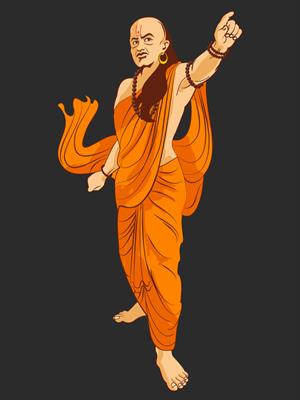
PUMPA - SMART LEARNING
எங்கள் ஆசிரியர்களுடன் 1-ஆன்-1 ஆலோசனை நேரத்தைப் பெறுங்கள். டாப்பர் ஆவதற்கு நாங்கள் பயிற்சி அளிப்போம்
Book Free DemoIntroduction:
Justice is considered one of the important cornerstones for the good governance of the country. The Principle of Justice is upheld by the Judiciary of the nation which plays a crucial role in protecting the rights of a citizen.
The present Indian Judiciary performs various roles like settling disputes, issuing verdicts etc. It also acts as the “Guardian of the Indian Constitution”.
The Judiciary is empowered to place enough checks and balances which restrains the other organs of the government (Legislature and Executive) from breaching their limits.
Ancient India and its Judicial System:

Chanakya
The Indian Justice system is believed to be one of the oldest justice systems in the world. During the ancient period, the principle of justice was administered on the concept of “Dharma”. Also, the King was considered the ultimate dispenser of Justice.
Arthasastra: The Earliest Chronicle of Arthasastra speaks about administration and justice written by “Chanakya” the prime minister of the Mauryan King “Chandragupta Maurya”.
The Arthasasthra laid down certain rules and duties for the king, which had to be adhered to by the ruler while spelling justice.
Dharma:
- The “Principle of Dharma” deals with duty and righteousness which has to be followed by the citizens and society.
- It is a unique blend of rigidity and flexibility as it accepts ancient principles and traditions change.
- The Smritis and Puranas are ancient scriptures that spoke about various Dharma’s and their applications. Some of the well-known Smritis of ancient India are “Manusmriti (written by Manu), Yajnavalika and Naradasmriti”.
Manusmriti: Also known as the “Laws of Manu” was originally written in Sanskrit by a saint named Manu. It is considered as the earliest work on “Dharmasastra”. This text is also known as “Manava Dharmasastra”.
Among the Mahajanapadas, the Vajji had their Justice system, and the highest appeals were placed in Ghana courts.
The Medieval Justice System:
During the Medieval period, most of the Indian territories were under the control of the Islamic rule exerted by the Delhi Sultanates and later by the Mughals. They brought a new system of judicial practices, which was not seen before in India.
The Muslim rulers laid great emphasis on the criminal justice reforms during their reign. They also enacted many reforms to make their rule more efficient.
Qutb-ud-din Aibak: He was the first ruler of the Delhi Sultanate who ruled the country under the slave or Ilbari dynasty. He also became the first ruler to appoint a “Chief Judge” in the country.
Later, Sher Shah Suri of the Sur dynasty brought various reforms in the realm of justice and opined that the “Stability of the government depends upon the justice system of the state”.
Fiqh-e-fero shahi: This Civil Procedure code was written and compiled during the reign of Firoz Tughlaq, the ruler of the Tughlaq dynasty. It was originally written in the Arabic language later translated to Persian.
The Reign of Akbar witnessed drastic changes in the justice system of the country, where he introduced a unanimous system of justice for his subjects.
Fatwa-i-alamgiri: This comprehensive code of Muslim Criminal Law was created in 1670 during the reign of Aurangzeb, the last great Mughal ruler.